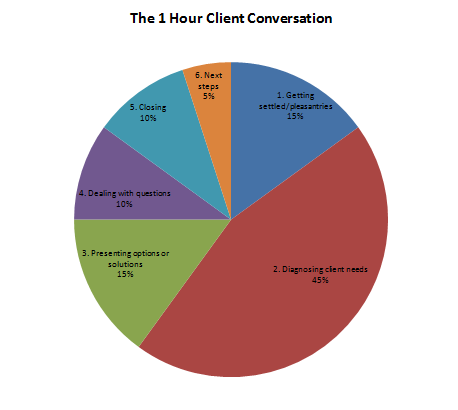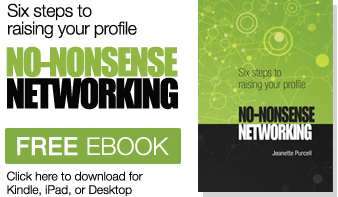
Showing all pages regarding one one.
The buzz about the Brain Exchange

One cold January day back in 2013 I was chatting to a business colleague about the joys of self employment after years of working for large organisations.
“But do you know what I don’t like about running my own business?” I said. “It’s that there is no one to talk to when I need to make a big decision or when I am thinking through a new idea or problem. Wouldn’t it be great if we could get access to some peer group support once a month, where we can do some ‘thinking aloud’ with other business people?”
As we talked, it became clear that my complaint was quite common among people who were either self-employed or running small enterprises. And we realised that, although there are many business groups and networks in existence, none of them addressed this particular problem. And that is how the Brain Exchange started.
Today the Brain Exchange is a regular fixture in Central London attended by growing numbers of people from different walks of life and backgrounds. Here’s how it works….
What is the Brain Exchange?
The Brain Exchange is a unique forum for business professionals to share experiences, exchange knowledge and find inspiration within a confidential and supportive environment. It’s not just a network or a talking shop – each meeting of the Brain Exchange is professionally facilitated to ensure that discussions are structured and focused on achieving results.
Who is it for?
Brain Exchange members are senior professionals working in a diverse range of roles and sectors. Current members include CEOs, entrepreneurs, social enterprises, freelancers, small business owners and senior managers.
How does it work?
Meetings of the Brain Exchange are held monthly in London from 18.30 to 20.30. There are eight spaces available at each meeting and places are reserved on a first come first served basis.
With direction from a professional facilitator, the group spends one hour exploring an issue presented by a group member who volunteers for the ‘hot seat’. The discussion follows an agreed structure to encourage full participation and the consideration of all view points. The final part of the discussion is focused on drawing conclusions from the discussion and identifying possible actions. The formal part of the meeting is followed by drinks and networking.
All discussions are strictly confidential so that members can be completely and honest about the problems that keep them awake at night.
What are the benefits?
If you’re in the ‘hot seat’ you benefit from what is in effect an hour of business coaching. But everyone benefits from being part of the discussion. All participants get:
- Eight different perspectives on an idea or problem
- New ideas for your business and new approaches to business problems.
- The opportunity to step back and reflect on your situation, your business and the future
- Access to support from fellow professionals in a confidential environment.
- New networks and business connections
- The opportunity to learn from others with different skills, knowledge and areas of expertise
What are people saying about the Brain Exchange?
“It’s like having a ready-made super-professional Advisory Board”
“The meetings are professional and focused – you get real value in less than two hours.”
“For my family-run business it’s a way of tapping into expertise and experience that we don’t have inside the company.”
“I gained a lot from being in the hot seat – I came away with solutions and ideas for re-energising my business.”
“Knowing that other people experience the same problems is so reassuring.”
“It’s like business-coaching but with added benefits!”
How can I join?
Membership of the Brain Exchange is by invitation only. You can be introduced by an existing member or apply direct to the Brain Exchange by contacting Jeanette Purcell. You should ideally have senior level business experience, be willing to share your experiences and ideas and be a good listener.
What’s the buzz? It’s the Brain Exchange.
For more information see http://jeanettepurcell.com/brain-exchange/
A knowledge-sharing forum for business professionals
The Brain Exchange is a unique forum for business professionals to share experiences, discuss concerns and find solutions and inspiration within a confidential and supportive environment.
It’s not just a network or a talking shop – each meeting of the Brain Exchange is professionally facilitated to ensure that discussions are structured and focused on achieving results.
Who is it for?

Brain Exchange members are senior professionals working in a diverse range of roles and sectors. Current members include CEOs, entrepreneurs, freelancers, small business owners and senior managers.
How does it work?

Meetings of the Brain Exchange are held monthly in London from 18.30 to 20.30. There are ten spaces available at each meeting and places are reserved on a first come first served basis.
At each meeting a member of the group volunteers for the ‘hot seat’. They will outline to the group an idea, a problem or challenge that they are facing – anything that they would like to share with the group. With direction from a professional facilitator, the group spends one hour exploring the issue, giving feedback and making suggestions. The discussion concludes with the person in the ‘hot seat’ summarising their learning from the discussion and determining what actions they will take.
The formal part of the meeting is followed by drinks and networking.
All discussions are strictly confidential.
What are the benefits?

If you’re in the hot seat you are effectively getting an hour’s worth of business coaching. But everyone benefits from being part of the discussion. All participants get:
- Eight different perspectives on an idea or problem
- New ideas for your business and new approaches to business problems.
- The opportunity to step back and reflect on your situation, your business and the future
- Access to support from fellow professionals in a confidential environment.
- New networks and business connections
- The opportunity to learn from others with different skills and areas of expertise
What are people saying about the Brain Exchange?

“It’s like having a ready-made super-professional Advisory Board”
“The meetings are professional and focused – you get real value in less than two hours.”
“For my family-run business it’s a way of tapping into expertise and experience that we don’t have inside the company.”
“I gained a lot from being in the hot seat – I came away with solutions and ideas for re-energising my business.”
“Knowing that other people experience the same problems is so reassuring.”
“It’s like business-coaching but with added benefits!”
How can I join?
Membership of the Brain Exchange is by invitation only. You can be introduced by an existing member or apply direct to the Brain Exchange by contacting Jeanette Purcell at jeanette@brainexchange.co.uk, or simply use the form below:
You should have senior level business experience, be willing to share your experiences and ideas and be a good listener.
How much does it cost?
Information about membership fees is available on www.brainexchange.co.uk
How do I sign up?
Go to www.brainexchange.co.uk
When is it next on?
The Brain Exchange will next be meeting on the following dates. Go to www.brainexchange.co.uk to register:
- 13 April 2016
- 11 May 2016
- 15 June 2016
- 13 July 2016
Tony Benn – not a leader but a champion

I had the pleasure of meeting Tony Benn in 1979 when he was campaigning for the May General Election (won by the Conservative party). He stood on a box outside my flat in South East London in front of a small polite crowd and I listened in awe to his passionate speech. He was already a hero of mine but when I met him he won me over with his clear vision or a fair and democratic society. He was also charming and sincere. Tony Benn was one of the people who helped to form my political views and inspired me to take more interest in political affairs. As time went on I did not agree with everything that he said or did but I admired him. I am not sure whether there are many politicians today who are prepared to stand by their beliefs and principles and to keep fighting for them no matter what. Tony Benn did have this courage – he was completely uncompromising.
Tony Benn stood against Denis Healey in the Labour Party’s Deputy Leadership election in 1981. He lost the contest. We can speculate about how successful he might have been in this leadership role. I suspect that the job may not have suited him and those close to Tony Benn have suggested that, over time, he too realised this. Perhaps he was always going to be happier as a ‘dissenting minister’.
When asked how he would like to be remembered Tony Benn said “I would be very pleased when I die if somebody put on a stone ‘Tony Benn – he encouraged us’.” He did more than that. He demonstrated the importance of courage, commitment and authenticity. How many leaders can claim to do the same?
Can you recognise talent in your team?

Recruitment is a costly process for most businesses. Yet so often companies start the recruitment process without fully considering the potential they have internally.
The advantages of identifying and promoting talent from within the business are numerous: you save on the cost of recruitment, you avoid the risk of taking on someone who is unknown to the company and its culture, you significantly reduce the time required for induction or ‘learning the ropes’ and, by promoting internally, you reduce the risk of losing good ambitious staff who might be feeling stuck in their role.
The reason given for not promoting internally is often that no one in the current team meets the requirements of the job. But think carefully – a more proactive approach to staff development and engagement will help to seek out the talent and potential in your company that you probably didn’t realise was there.
Most people can think of instances when they or someone they know have been working away in a position which does not allow them the opportunity to shine or to demonstrate what they really have to offer. They may be in a job that doesn’t make the best use of their skills, they may be poorly managed and have not been encouraged to take on new challenges. Whatever the reason, hidden potential can be unearthed by committing to a straightforward staff development programme. Staff development programmes help to keep your best staff by engaging them in development opportunities and getting them to think about how they can improve and grow with the company. A good staff development programme takes some planning but the return on your investment in a programme is significant. You save on recruitment costs, you attract good people to your company and you engage and develop top talent from within.
Of course, there is another benefit from adopting a proactive approach to developing your talent – it tends to show up those people in your team who are not cut out for promotion or who simply do not have the level of commitment you’re looking for. Dealing with these people is crucial and represents the other, less talked about, side of effective talent management.
How to be an engaging conversationalist

How many times have you had a conversation with someone whose opinion about you really matters and walked away feeling dissatisfied about how it went? Sometimes we fail to present ourselves positively or forget to mention a really important point. Other times we might feel we lost the opportunity to build a rapport with the person. Were you aiming to build a better working relationship with them? If so, how likely are they to want to talk to you again?
There are many work situations where the pressure is on to make a positive impression during a short conversation – these include interviews, networking events and meeting a new boss. I’m interested in the conversations where the objective is to build a rapport and develop a positive working relationship. You might want to get to know an influential, senior person in your organisation. Or perhaps you are working on a project with a client and want to extend your networks to the key decision makers within the company. Let’s say you’ve arranged a meeting with that all important influential person. Great! That’s the first step. Now, how can you make the most of this opportunity to impress?
First be clear about the objective of the conversation and prepare for it. Anticipate their questions and have some answers ready, or rehearse the way you will present your ideas. If there is no particular agenda then treat this as an opportunity to do some fact-finding. This is a great way to demonstrate interest in the person, their role and their objectives. It involves a lot of listening and the use of intelligent questions. Here’s a useful crib sheet for this type of conversation. I have used this on many occasions to help high-flying Executives who find themselves lost for words when it comes to small talk! It’s very simple and surprisingly effective.
1. Open with a brief introduction and explanation for the discussion. “I’m interested in getting some feedback on X” or “I’d appreciate some advice on X” or even “I’m on a fact-finding mission..”
2. Use open questions. (Who? What? Why? How? When?) “Why do you think that’s happening?” or “Who would be a good person to speak to about that?” or “What do you think would improve that situation?”
3. Use affirmative statements. “I see” or “that’s interesting”
4. Check your body language. Smile, nod or show concern as appropriate. Keep an open posture (arms uncrossed, lean forward), maintain some eye contact and don’t fidget!
5. Explore the relevant issues further. Direct the conversation by picking up on points that are useful to you. “Can you expand on that?”
6. Clarify and check understanding. “So, if I have understood this correctly…” or “so I think you’re saying that….” Or “so just to be clear…”
7. Summarise and suggest next steps. “So, can I just recap – (points a, b, and c)” or “I’d like to come back to you by (date)…with some options…”
8. Thank them! “I really appreciate you taking the time to see me. It’s been very useful.”
Every situation is different and you’ll need to use some judgement about what is appropriate or effective in each case. The point is, be prepared to listen and fully attend to the other person – sounds easy but very few people can do this well.
For more listening tips see JPA’s Top Ten Tips for Effective Listening.
Top Ten Tips for Effective Listening
Why people resist change

When managing change in business the focus is so often on monitoring time, money and process. It’s true that good project management skills are essential to successful change management, but we also need to lead people through the process and this involves understanding how human beings react to change.
The behaviour of my friend’s three year old daughter, Anna, illustrates the point. My friend was moving out of London to a bigger house in the country. She had told her daughter about the move but Anna had not reacted well and was refusing to enter into any discussions about her new life in the country. My friend explained to me that, every morning on the walk to Anna’s nursery in London, they passed a primary school. In the playground of this school were three bright yellow swings. “That’s the school I want to go to so that I can play on those swings” Anna had said. Her interest in swings seemed to be at the heart of her resistance to moving. Realising this, my friend checked out the primary school that her daughter would be attending in the country. Not only did this school have swings in the playground but also a climbing frame and a sandpit! She took Anna to see the school and the three year old was immediately converted. As the day of the move grows closer they have been visiting the new school as often as they can to maintain Anna’s enthusiasm. My friend’s daughter is now looking forward to her new life in the country – everyone is happy!
Although this story appears to be far removed from the complexities of the workplace, it does demonstrate some of the most fundamental principles of effectively managing and leading people through change.
1. Clearly articulate the benefits of change to your team. “We are moving and it’s going to be great” is not good enough. Human beings are naturally resistant to change and will not co-operate unless they understand and feel excited by the end goal.
2. Don’t assume that your enthusiasm for change is going to be shared by others. When talking about the new future think about what will motivate different people to support the project. Anna didn’t share her mother’s excitement about the new house, but she could become very enthusiastic about new swings! Similarly, in an ICT change programme for example, your Board of Directors might be turned on by the prospect of a good looking new website whereas, for your Finance team, the prospect of more streamlined processes for invoicing is more likely to motivate them to support change. Amend your change message for different audiences, find out what life looks like from their perspective, and highlight the benefits that will appeal directly to them.
3. Try to make your vision of the new future as clear and tangible as possible. My friend didn’t just talk to Anna about the new school, she took her there so that Anna could see for herself. Can you make the benefits of change come alive for your team?
4. Remind your team of the long term vision and the benefits of change at regular intervals. When the going gets tough and the end seems a long way off it is easy to lose sight of the overall goal. Keep that goal at the front of people’s minds to maintain their morale and motivation.
When dealing with adults it is useful to remember that some of the most childish instincts are at the heart of resistance to change. If you understand and deal with these instincts you have a much better chance of leading a motivated, supportive team through the change process.
Join the JPA Master Class “Managing change without the pain” on 20 May 2014
It’s networking Jim, but not as we know it

I was coaching a client this week who recently became self-employed after working as a project manager for many years. She had already completed a couple of jobs on a freelance basis and there were more in the pipeline. “The thing is” she said “all the work I’ve done so far has come through word of mouth. At some point I will have to advertise and do some real marketing”. I queried this with her, suggesting that she must have some great networks that she could tap into for more business. “Ah, but I’m no good at networking” she replied “I haven’t got time to go to all those events and anyway that sort of thing scares me!”.
Now, this conversation highlights two very common misunderstandings about networking.
The first misunderstanding is that acquiring business through word of mouth is somehow not ‘real’ marketing. More than that, there is a tendency to assume that referrals or personal recommendations are more about luck than successful marketing. Absolutely not! You don’t get referrals unless you have a great reputation and can be trusted to do a good job. If you are proactive about maintaining the relationships that you have with people in your industry you will find that these relationships lead to new connections and new business. Word of mouth is THE most important form of marketing for small businesses. Don’t dismiss or ignore it!
The second misunderstanding is that networking is all about going to events, receptions and conferences. Most people will tell you that they associate the word ‘networking’ with the experience of walking into a drinks reception full of people they don’t know and being expected to ‘work the room’ (dreadful phrase). I can’t remember the last time I went to a networking event and yet I am networking all the time. Yes, you’ve got to get out there and meet people to build your business, and you’ve got to do some selling. But you don’t have to attend events or put yourself into unfamiliar situations to achieve this. Networking is about building relationships with people you like, admire and trust. Start building your networks by talking to people who already know and love you. Ask them for advice, ask them for introductions to people who might want what you’re selling. This form of networking is ten times more successful than cold calling, expensive advertising or collecting a few random business cards at a networking event.
My client visibly relaxed when she thought about networking differently. It’s not hard work, it needn’t be scary, but good networking is essential to developing your business.
Don’t miss JPA’s Master Class “Positive Impact and Confident Networking” on 25 February 2014. Early bird booking discount applies until 28 January 2014. Find out more here http://jeanettepurcell.com/jpa-master-class-series/
JPA Master Class Series – Session 2
Leading and Working with Teams
Tuesday 8 April 2013 (9.00 to 16.30)
The Grand Connaught Rooms, 61-65 Great Queen Street, London WC2B 5DA
“Not finance. Not strategy. Not technology. It is teamwork that remains the ultimate competitive advantage, both because it is so powerful and so rare”
Patrick Lencioni, The Five Dysfunctions of a Team (2002)
Overview
With the move to flatter organisational structures, more complex processes and an increase in global working, successful teamwork has become synonymous with business success. Yet efforts to create high performing teams so often fail because the basics of good teamwork are overlooked. This practical Master Class will help you to understand how teams develop, what makes them successful and why they fail. You will develop and practice essential team skills including the skills involved in leading virtual and complex teams. Whether you’re a team player or a team leader this Master Class will give you the tools and techniques you need to achieve peak performance.
How much does it cost?
The Master Class fee is £235 per delegate payable at the time of booking.
The fee includes all materials and refreshments including lunch.
Available for bookings shortly
Where is the Master Class being held?
The Grand Connaught Rooms, 61-65 Great Queen St, London WC2B 5DA. The venue is easily accessible and close to all London transport links. The nearest tube is Holborn which is served by the Central and Piccadilly lines.
JPA Master Class Policy
JPA accepts firm bookings through the JPA website – in making such bookings clients accept our bookings and cancellation policy.
Provisional bookings may be made but must be confirmed at least 30 days before the course date or else they will be considered a firm booking and will be subject to our standard booking and cancellation policy.
Confirmed bookings may be cancelled up to 21 days from the course start date without any penalty. Cancellation within 21 days of the course start date will mean that the full fee is payable for the course and there will be no refund. We will however consider transferring your place to another course date if a suitable course and place is available.
Name substitutions can be made at any time before the course without penalty.
Only one discount can be used per booking.
JPA does not store credit card details nor do we share customer details with any 3rd parties.
JPA reserves the right to cancel a course if insufficient bookings have been received. Delegates will be offered an alternative date or a full refund of the course fee. We reserve the right to make changes to the programme and the right to refuse any booking.
Privacy Policy
What is this Privacy Policy for?
This privacy policy is for this website www.jeanettepurcell.com and served by Jeanette Purcell Associates and governs the privacy of its users who choose to use it.
The policy sets out the different areas where user privacy is concerned and outlines the obligations & requirements of the users, the website and website owners. Furthermore the way this website processes, stores and protects user data and information will also be detailed within this policy.
The Website
This website and it’s owners take a proactive approach to user privacy and ensure the necessary steps are taken to protect the privacy of its users throughout their visiting experience. This website comply’s to all UK national laws and requirements for user privacy.
Use of Cookies
This website uses cookies to better the users experience while visiting the website. Where applicable this website uses a cookie control system allowing the user on their first visit to the website to allow or disallow the use of cookies on their computer / device. This complies with recent legislation requirements for website’s to obtain explicit consent from users before leaving behind or reading files such as cookies on a users computer / device.
Cookies are small files saved to the users computers hard drive that track, save and store information about the users interactions and usage of the website. This allows the website, through it’s server to provide the users with a tailored experience within this website.
Users are advised that if they wish to deny the use and saving of cookies from this website on to their computers hard drive they should take necessary steps within their web browsers security settings to block all cookies from this website and it’s external serving vendors.
This website uses tracking software to monitor it’s visitors to better understand how they use it. This software is provided by Google Analytics which uses cookies to track visitor usage. The software will save a cookie to your computers hard drive in order to track and monitor your engagement and usage of the website but will not store, save or collect personally identifiable information. You can read Google’s privacy policy here for further information [http://www.google.com/privacy.html ].
We also use Google’s Interest-based advertising and audience data to monitor visitors’ age, gender and interests. This too is anonymised and used purely to reveal broad insights about our audience.
You can edit the personal information used by Google Analytics or opt out of sharing this information entirely by following this link. Alternatively, you can download a plugin for your browser and opt out of Google Analytics entirely.
Other cookies may be stored to your computers hard drive by external vendors when this website uses referral programs, sponsored links or adverts. Such cookies are used for conversion and referral tracking and typically expire after 30 days, though some may take longer. No personal information is stored, saved or collected.
Contact & Communication
Users contacting this website and/or it’s owners do so at their own discretion and provide any such personal details requested at their own risk. Your personal information is kept private and stored securely until a time it is no longer required or has no use, as detailed in the Data Protection Act 1998. Every effort has been made to ensure a safe and secure form to email submission process but advise users using such form to email processes that they do so at their own risk.
This website and it’s owners use any information submitted to provide you with further information about the products / services they offer or to assist you in answering any questions or queries you may have submitted. This includes using your details to subscribe you to any email newsletter program the website operates but only if this was made clear to you and your express permission was granted when submitting any form to email process. Or whereby you the consumer have previously purchased from or enquired about purchasing from the company a product or service that the email newsletter relates to. This is by no means an entire list of your user rights in regard to receiving email marketing material. Your details are not passed on to any third parties.
Email Newsletter
This website operates an email newsletter program, used to inform subscribers about products and services supplied by this website. Users can subscribe through an online automated process should they wish to do so but do so at their own discretion. Some subscriptions may be manually processed through prior written agreement with the user.
Subscriptions are taken in compliance with UK Spam Laws detailed in the Privacy and Electronic Communications Regulations 2003. All personal details relating to subscriptions are held securely and in accordance with the Data Protection Act 1998. No personal details are passed on to third parties nor shared with companies / people outside of the company that operates this website. Under the Data Protection Act 1998 you may request a copy of personal information held about you by this website’s email newsletter program. A small fee will be payable. If you would like a copy of the information held on you please write to the business address at the bottom of this policy.
Email marketing campaigns published by this website or it’s owners may contain tracking facilities within the actual email. Subscriber activity is tracked and stored in a database for future analysis and evaluation. Such tracked activity may include; the opening of emails, forwarding of emails, the clicking of links within the email content, times, dates and frequency of activity [this is by no far a comprehensive list].
This information is used to refine future email campaigns and supply the user with more relevant content based around their activity.
In compliance with UK Spam Laws and the Privacy and Electronic Communications Regulations 2003 subscribers are given the opportunity to un-subscribe at any time through an automated system. This process is detailed at the footer of each email campaign. If an automated un-subscription system is unavailable clear instructions on how to un-subscribe will by detailed instead.
External Links
Although this website only looks to include quality, safe and relevant external links users should always adopt a policy of caution before clicking any external web links mentioned throughout this website.
The owners of this website cannot guarantee or verify the contents of any externally linked website despite their best efforts. Users should therefore note they click on external links at their own risk and this website and it’s owners cannot be held liable for any damages or implications caused by visiting any external links mentioned.
Adverts and Sponsored Links
This website may contain sponsored links and adverts. These will typically be served through our advertising partners, to whom may have detailed privacy policies relating directly to the adverts they serve.
Clicking on any such adverts will send you to the advertisers website through a referral program which may use cookies and will tracks the number of referrals sent from this website. This may include the use of cookies which may in turn be saved on your computers hard drive. Users should therefore note they click on sponsored external links at their own risk and this website and it’s owners cannot be held liable for any damages or implications caused by visiting any external links mentioned.
Social Media Platforms
Communication, engagement and actions taken through external social media platforms that this website and it’s owners participate on are custom to the terms and conditions as well as the privacy policies held with each social media platform respectively.
Users are advised to use social media platforms wisely and communicate / engage upon them with due care and caution in regard to their own privacy and personal details. This website nor it’s owners will ever ask for personal or sensitive information through social media platforms and encourage users wishing to discuss sensitive details to contact them through primary communication channels such as by telephone or email.
This website may use social sharing buttons which help share web content directly from web pages to the social media platform in question. Users are advised before using such social sharing buttons that they do so at their own discretion and note that the social media platform may track and save your request to share a web page respectively through your social media platform account.
Shortened Links in Social Media
This website and it’s owners through their social media platform accounts may share web links to relevant web pages. By default some social media platforms shorten lengthy url’s [web addresses] (this is an example: http://bit.ly/zyVUBo).
Users are advised to take caution and good judgement before clicking any shortened url’s published on social media platforms by this website and it’s owners. Despite the best efforts to ensure only genuine url’s are published many social media platforms are prone to spam and hacking and therefore this website and it’s owners cannot be held liable for any damages or implications caused by visiting any shortened links.
Resources & Further Information
- Data Protection Act 1998
- Privacy and Electronic Communications Regulations 2003
- Privacy and Electronic Communications Regulations 2003 – The Guide
- Twitter Privacy Policy
- Facebook Privacy Policy
- Google Privacy Policy
- Linkedin Privacy Policy
- Mailchimp Privacy Policy
Free Website Privacy Policy written by Jamie King Media – SEO Pembrokeshire © 2013 – v.2.0 April 2013
Are you listening to your clients?

I was talking to a group of business people recently on the subject of winning and keeping clients. We agreed that face to face conversations with clients are the best opportunity you have to win them over. It’s a shame then, that this critical stage in the process is often poorly managed. When we’ve done all our marketing and networking and have actually got a hot prospect who is willing to sit down and have a discussion with us, we go and mess it up. Why is this? Most of the time it’s because we are so intent on selling our product or idea that we forget to listen. Remember, the aim is not to dump information on the client. Rather, the intention is to identify what their problem or challenge is, show how your product or service can help them and then elicit a positive response.
So a large part of the conversation will involve listening to the client, asking them questions and being interested in what they are saying. Sounds easy doesn’t it? It’s not. Listening patiently is hard – we are all too eager to say our piece and jump in with our solutions. But if you can spend time allowing your client to talk, and being genuinely interested, they will be delighted and impressed. And that’s how you begin to establish a sustainable trusting relationship – the kind of relationships that are more likely to bring you business. Because we tend to do business with people we like and trust.
A colleague of mine, Jamie Hancox of ‘buyingtime’ (http://www.buyingtime.co.uk/), gave me the idea of describing the perfect client conversation. So I created this diagram to show the key stages of the discussion (see above). This format is not intended to be prescriptive. It simply illustrates just how much time is spent on understanding the client and diagnosing their needs. Of course, you still have to describe the benefits of what you do and you have to close the sale (it’s all too easy to shy away from this crucial bit!) but those parts take up relatively less time.
Remember, companies do not make the decision to hire or buy. People do. The relationship you build with people in your client organisations is crucial to your business. Try listening, it’s very effective.


















